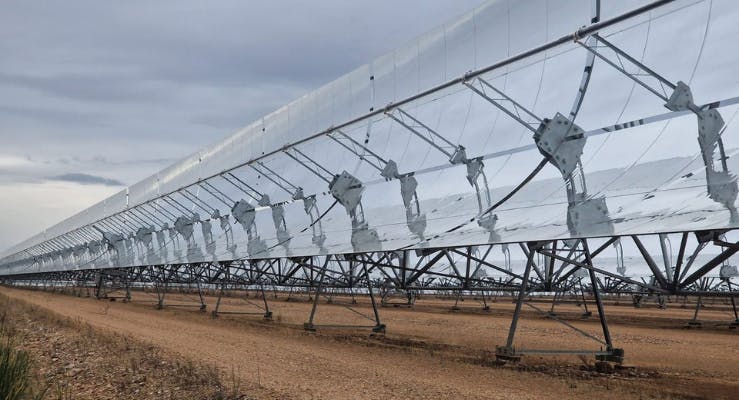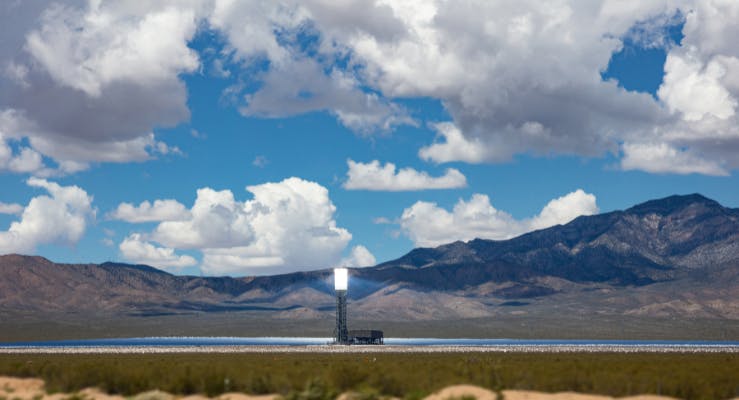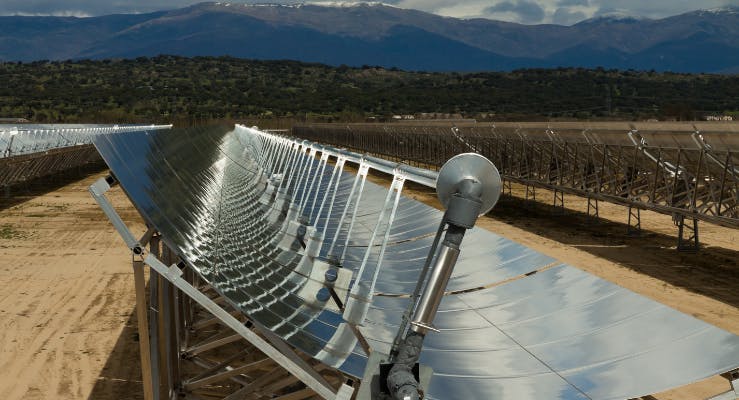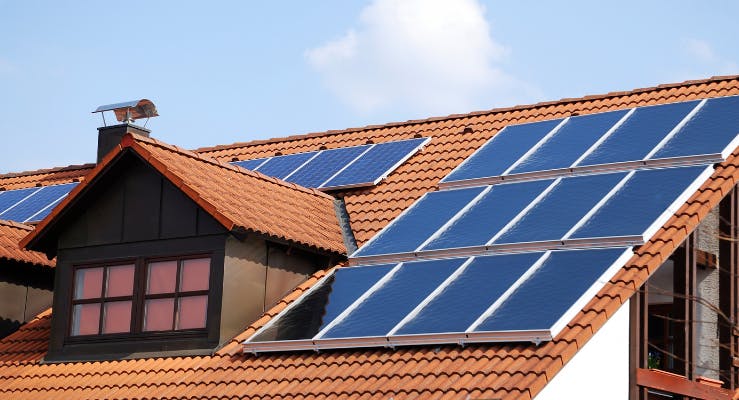R. Dr. Francisco Sá Carneiro
Zona Industrial de Bouro, Letra C
4740-010 Esposende, Portugal

Concentrated Solar Power (CSP) vs. Photovoltaic (PV)
In the wide field of solar energy, two prominent technologies stand out: Concentrated Solar Power (CSP) and Photovoltaic (PV) systems. Both technologies aim to harness the power of the sun to generate electricity. However, they employ distinct mechanisms and offer unique advantages and applications. As the renewable energy industry and global markets evolve, there is a growing debate surrounding the competitive advantages of these solar energy technologies. This article delves into the disparities between CSP and PV, shedding light on their individual characteristics and benefits.
Operating Principles
Concentrated Solar Power (CSP) systems utilize mirrors or lenses, called heliostats, to concentrate sunlight onto a receiver. The central receiver, typically located at the top of a tower or trough, which houses a heat transfer liquid. By harnessing the concentrated solar energy, the liquid is heated, generating steam that drives a turbine and produces electricity. This indirect method generates alternating current (AC), facilitating seamless distribution across the power network.
Photovoltaic (PV) solar panels are typically made of semiconductor materials such as crystalline silicon. PV systems directly convert sunlight into electricity using photovoltaic cells. When sunlight strikes the cells of the solar module, they trigger the photovoltaic effect, generating a direct current (DC). Subsequently, inverters are employed to convert the DC power into AC, making it suitable for distribution.


Concentrated Solar Power
Photovoltaic
Efficiency and Energy Storage
Concentrated Solar Power (CSP) systems excel in energy storage through Thermal Energy Storage (TES) technologies, allowing them to generate power even during periods of low or no sunlight, making CSP a viable option for continuous power generation. This capability helps mitigate the intermittency issues associated with environmental fluctuations.
Photovoltaic (PV) systems do not inherently store thermal energy and predominantly rely on direct electricity production. Traditionally, they do not include built-in energy storage. Nevertheless, advancements in battery technology are revolutionizing the integration of storage solutions with PV installations. This progress enhances their ability to supply power during non-daylight hours, becoming more and more a practical solution.
Scalability and Land Use
Concentrated Solar Power (CSP) plants require substantial land due to the concentration and focusing of sunlight. They are typically deployed in large-scale installations, making them more suitable for utility-scale power generation. This type of plants requires a significant amount of land due to the nature of the technology. The land is primarily used for the installation of heliostats or mirrors, which need to be arranged in a way that maximizes solar concentration. CSP plants thrive in regions with ample open land and high solar irradiation. Although CSP plants will typically use more land per MWp, the actual electricity production can easily be twice the production of a PV plant occupying the same area.
Photovoltaic (PV) systems offer exceptional scalability, capable of being deployed in various sizes, ranging from small rooftop installations to large-scale solar farms. PV installations are flexible in terms of land use, as they can be integrated into buildings, carports, and other available surfaces. The size of a PV plant depends on factors such as available space, solar resource potential, electricity demand, and project goals. This versatility makes PV systems suitable for both centralized and distributed power generation.




Geographic Suitability
Concentrated Solar Power (CSP) plants flourish in regions with high direct solar radiation and clear skies. They demonstrate optimal efficiency in areas with consistently high solar resources, such as desert areas. These are areas that, typically, are not the best for PV systems since they have significant losses associated with the high temperature of the modules.
Photovoltaic (PV) systems can be deployed in a wide range of geographic locations, spanning from sunny regions to areas with lower solar intensity. PV installations can generate electricity even under diffuse sunlight conditions, although their efficiency may vary. This makes PV systems suitable for a broader range of climates and geographical locations. Making the system much more appealing and complete.
Market Perspectives: Comparison
Energy investors consider the cost of energy, ancillary services, and power dispatchability as key factors when selecting power sources. In recent years, PV has gained preference over CSP due to its competitive energy costs. PV technology is perceived as more established, easier to construct, and less expensive in comparison to CSP. The substantial drop in PV prices and reduced installation times have further contributed to this preference. To emphasize this market trend, there are several CSP projects that have been converted to PV in an attempt to reduce the initial cost and speed up the construction.
Integration for Increasing Solar Power Penetration
While PV is currently at an advantage due to cost reductions and market conditions, the future may see a major shift, we may observe collaboration between CSP and PV. Research suggests that CSP's Thermal Energy Storage capabilities can complement PV and other intermittent renewable energy technologies. Integrating CSP with PV can address intermittency issues and enhance the reliability and penetration of solar in the power industry.
This integration has the potential to optimize demand load curves and reduce ancillary service requirements.
Solar Synergy: CSP & PV
It is necessary to understand nevertheless that while CSP uses concentrated sunlight to produce steam, photovoltaic systems directly convert sunlight into electricity through photovoltaic cells.
The choice between these two technologies then depends on factors such as scalability, land use, geographical suitability, and the need for energy storage.
Currently the debate surrounding the choice of these technologies leans towards PV due to its cost advantages. However, the potential for collaboration and integration between these two technologies could pave the way for greater penetration of solar power in the energy sector. Overall, the integration of CSP and PV technologies offers a synergistic approach to enhance solar energy penetration. By combining their unique capabilities, such as thermal storage, efficient land use, complementary energy generation, and cost optimization, we can unlock the full potential of solar power and contribute to a more sustainable and reliable energy future. Do you have any suggestions or topics about the solar universe you would like to read here? Reach us by email (and go solar)!




